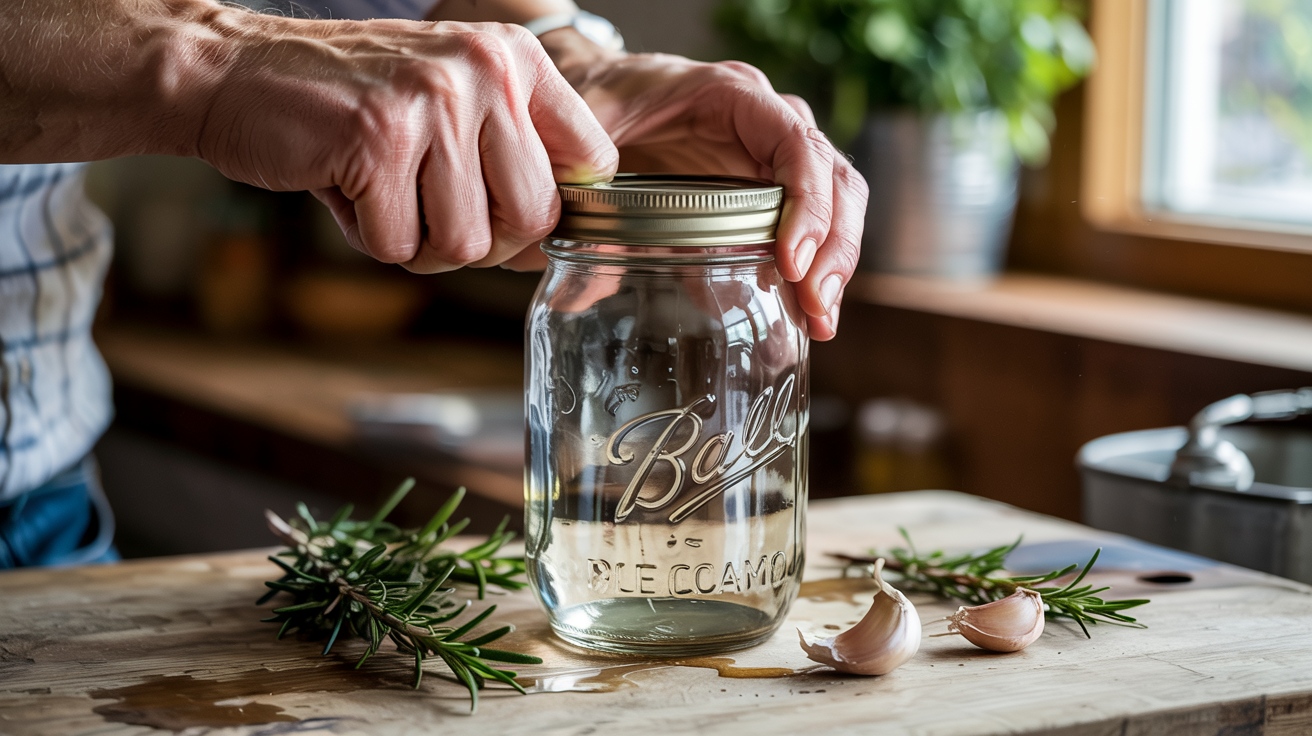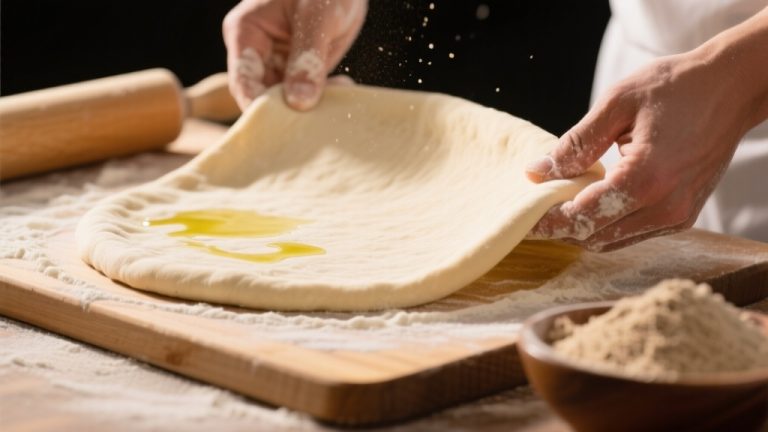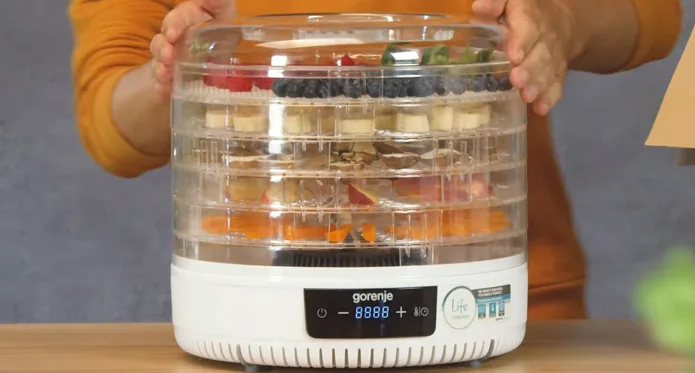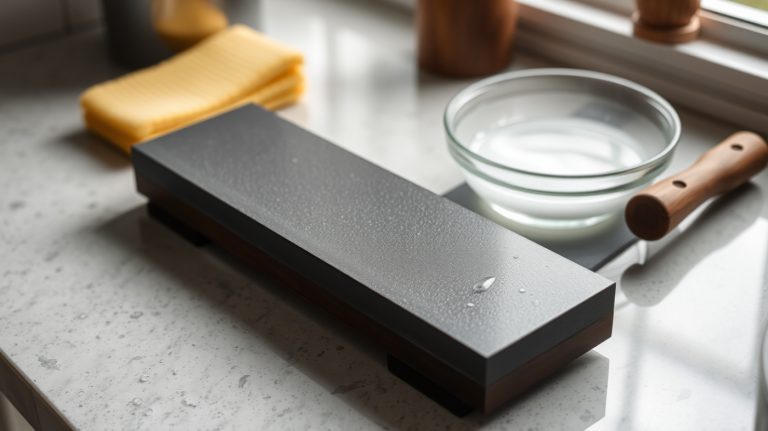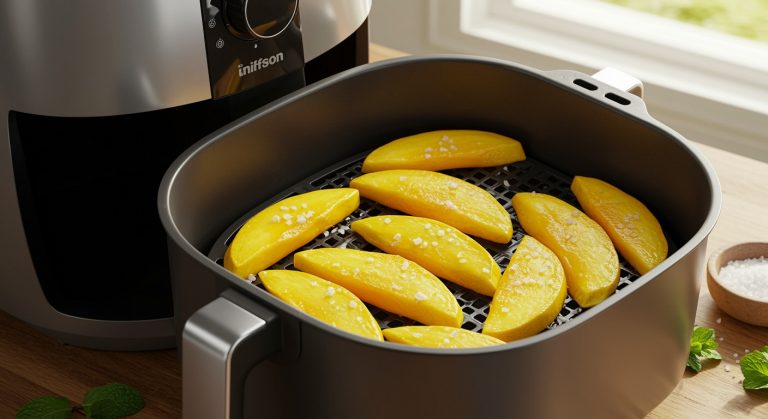How to Open a Stuck Mason Jar: Quick Trick for Tough Lids
To open a stuck mason jar, start by running warm water along the lid to loosen the seal. You can also tap the lid gently or use a butter knife to ease into the gap.
Improve your grip with rubber bands or a silicone mitt. If the problem persists, try heating the lid briefly with a hair dryer.
For more tips on enhancing your technique and preventing future sticking, explore additional helpful methods.
Key Takeaways
- Run warm water over the lid or submerge the jar to soften the seal and make it easier to open.
- Tap the lid gently with a utensil or slap the jar’s base to break the vacuum seal.
- Use a butter knife to gently pry the lid away from the jar for leverage.
- Enhance your grip with rubber bands or silicone mitts while twisting the lid.
- Consider using tools like jar wrenches or automatic openers for added assistance.
Identifying the Cause of a Stuck Lid
When you encounter a stuck mason jar lid, the first step is to identify the cause, as this can help you choose the right approach to open it. Food residue is a common culprit; dried sauces can solidify and create a strong bond.
Check the condition of the jar and lid, as warped or damaged components might be causing the issue. Seal strength also plays a role—if a strong vacuum forms, it could make the lid harder to open. Environmental factors, like temperature changes, can cause the seal to tighten.
Additionally, the use of silicone gaskets in some lids can contribute to a tighter seal. Finally, consider your handling and storage methods, as improper positioning or dropped jars can lead to stuck lids.
Identifying these factors will guide your next steps effectively. Additionally, ensure that you use proper tightening techniques to prevent excessive seal strength that can contribute to stuck lids.
Methods for Breaking the Seal
To break the seal on a stuck mason jar, you can use a warm water technique or a direct impact method. Running the lid under hot water helps expand the metal, making it easier to open.
Alternatively, tapping the lid gently with a utensil can disrupt the seal and free the jar.
Another effective method is to use a butter knife to carefully pop the seal by easing it into the gap between the jar and lid.
Warm Water Technique
One effective method for breaking the seal on a stuck mason jar is the warm water technique.
Start by running warm water along the seal between the jar and the lid to expand the metal. If the jar’s cold, it won’t work as well, so try submerging it in warm water instead. Make sure the water isn’t boiling, as this can break the glass or cause burns. You can also place a cloth around the jar for safety. Hot water can also help expand the lid, making it easier to remove.
For even heating, put the jar upside-down in a bowl of warm water or fill a sink halfway with it. If you prefer, use a hair dryer to apply heat directly to the lid for a few seconds.
Direct Impact Method
If you find yourself struggling with a stuck mason jar lid, the direct impact method can effectively break the seal.
Try holding the jar upside down and sharply slapping the base; this technique helps release the vacuum seal. Alternatively, bang the lid against the countertop at a 45-degree angle, which can loosen it without causing damage.
For a gentler approach, use a wooden spoon to tap around the lid’s edge, releasing trapped air pockets. Remember to apply controlled force to avoid breaking the jar. Additionally, running the lid under hot water can help expand the metal, making it easier to twist open.
These impact techniques leverage sudden force to make it easier for you to open that stubborn lid. With a bit of practice, you’ll master these methods in no time!
Enhancing Your Grip
Enhancing your grip on a stuck mason jar can make all the difference in successfully opening it.
Here are some effective techniques to try:
- Improvised Gripping Aids: Use rubber bands or silicone oven mitts to improve traction.
- Texture Modification: Apply grip-enhancing stickers to the lid for better control.
- Ergonomic Handling: Hold the lid with both hands for a firmer grip and less slippage. Additionally, using a jar lifter with correct orientation can significantly enhance your ability to grip and open jars effectively.
- Temperature Adjustment: Run the jar under warm water to soften the seal and improve grip.
- Stable Surface: Position the jar on a stable surface to minimize movement while you twist.
These strategies can greatly boost your chances of opening that stubborn jar with ease!
Utilizing Helpful Tools
When your grip alone isn’t enough to open a stubborn mason jar, turning to helpful tools can make the task much easier.
Start with elastic tools like rubber bands to improve grip and leverage on the lid. You can also use a spoon as a lever to break the seal or a butter knife to pry between the lid and jar.
For a bit of impact, try placing the jar in a shoe or tapping it on the counter. If you have mechanical tools, consider jar wrenches or automatic openers for a hassle-free experience. Applying pressure on the lid while turning can also create a better grip, making it easier to twist off the lid.
Don’t forget common household items like a small towel for extra grip. With these tools, you’ll have a better chance of conquering that stubborn jar!
Preventing Future Sticking Issues
To prevent future sticking issues with mason jars, maintaining cleanliness and proper canning techniques is essential. Here are some practical tips to keep your jars in top shape:
Maintaining cleanliness and proper canning techniques is crucial to avoid sticking issues with mason jars.
- Cleanliness is Key: Thoroughly clean jars before use to prevent residue buildup.
- Proper Filling Techniques: Guarantee correct headspace and avoid overfilling to reduce siphoning.
- Temperature Control: Maintain consistent temperatures during processing to minimize fluctuations. Additionally, allowing jars to rest in the canner for 5-10 minutes after processing can help further minimize liquid loss. Using oxygen absorbers can also help in maintaining food quality during storage.
- Hot Packing: Use hot packing methods to remove air from fruit, reducing sticky issues.
- Storage Practices: Remove rings after canning and store jars in cool, dry places to maintain seal integrity.
Seeking Assistance When Needed
Even with proper maintenance, there are times when a mason jar lid just won’t budge. Don’t hesitate to seek assistance to tackle the stubborn lid.
Automated jar openers are great for tough jars, while manual openers can help with less stuck ones. You might also enlist a friend or family member for extra strength. Using a rubber gripper can provide better traction and help you get a firm grip on the lid.
Household items like a shoe for leverage or duct tape for grip can be surprisingly effective. If you’re feeling adventurous, use a spoon as a lever or gently strike the jar to break the seal.
Consider that proper sealing techniques are crucial for maintaining food freshness, as vacuum sealing can help prevent jars from becoming stuck due to pressure changes. Local hardware stores often carry specialized tools that can simplify the process.
Remember, it’s okay to ask for help when needed—everyone battles a stubborn jar now and then!
Frequently Asked Questions
What Types of Jars Are Most Prone to Getting Stuck?
Certain jars are more prone to getting stuck. You’ll find that older seals, commercial jars with narrow sealing surfaces, and vintage jars from the 1920s to 1970s often have issues. Non-canning Mason jars can also stick due to their design.
Additionally, less common brands or counterfeit lids mightn’t seal properly, increasing the chances of sticking. Factors like moisture, improper handling, and tight lids can further contribute to the problem.
Can I Reuse a Broken Jar Lid?
Reusing a broken jar lid‘s a risky recipe for disaster. You can’t guarantee a proper seal, which might lead to spoilage and safety scares. Health organizations clearly caution against this practice.
While it may seem like a savvy savings strategy, the potential problems outweigh any cost benefits. Instead of reusing those damaged lids, consider recycling them to reduce waste and embrace eco-friendly alternatives for your kitchen adventures.
Are There Any Health Risks With Stuck Jars?
Yes, there can be health risks associated with stuck jars. If a jar’s seal is broken improperly, it can expose the contents to bacteria, leading to spoilage and potential foodborne illnesses.
Additionally, using excessive force to open a stuck jar can cause breakage, resulting in cuts or burns. Always inspect jars for damage and guarantee proper canning methods to minimize risks.
If you’re unsure about the safety of the contents, it’s best to discard them.
How Do I Know if a Jar Is Safe to Open?
To know if a jar is safe to open, first check for signs of spoilage: look for unusual smells, mold, or liquid spurting out when you open it.
Inspect the lid for concavity and listen for a “ping” sound that confirms a good seal. If you notice any odd colors or air bubbles, it’s best to avoid opening.
Always wear gloves when handling jars that seem questionable to protect yourself from potential toxins.
What Should I Do if the Jar Breaks While Opening?
If your jar breaks while opening, don’t panic! First, prioritize safety—wear gloves and protective glasses.
Carefully clean up large glass pieces with a dustpan and brush. For smaller shards, use wet paper towels to guarantee you pick up everything.
Keep the area clear and post warning signs until you finish cleaning. Dispose of the glass properly, marking it as hazardous.
Finally, assess any spilled contents to determine if they’re safe or need to be discarded.
Prevention is Key: Stop Jars from Sticking Again
Ultimately, opening a stuck mason jar can be a straightforward task once you understand the cause and apply the right techniques. Did you know that nearly 30% of people struggle with stubborn jar lids at least once a month?
By enhancing your grip and utilizing simple tools, you can easily break that pesky seal. Remember to take preventative measures for the future, and don’t hesitate to ask for help if needed. A little teamwork can go a long way.

